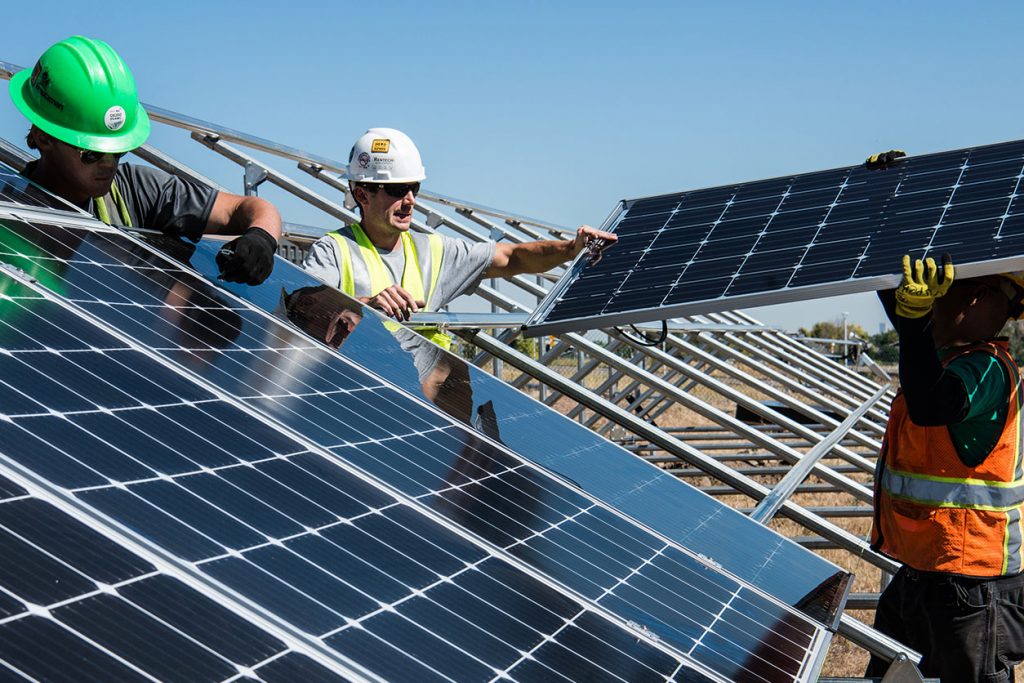
How Do Solar Panels Work? A Step by Step Guide
How Do Solar Panels Work? A Step by Step Guide https://pbroofingco.com/wp-content/uploads/2020/06/unsplashimg-science-in-hd-ZNS6rizp9RU.jpg 1254 836 PB Roofing https://secure.gravatar.com/avatar/ee28a6949ea6af745b0ddec55b8b9ce1?s=96&d=mm&r=gHow Do Solar Panels Work: From Sun to Electricity
When solar energy was first introduced to the market, it was quite a costly purchase. However, in recent years, new technologies and manufacturing efficiencies have made this once luxury an affordable upgrade. As you may be considering making the switch to solar panels for your commercial building, let’s answer the most vital question first—how do solar panels work?
STEP 1: The Panels Absorb Sunlight
Each solar panel is constructed with four major components: solar cells, a metal frame, a glass casing, and wiring. The panels are always grouped, typically on rooftops but sometimes in large outdoor spaces, to ensure maximum effect. During daylight hours, photovoltaic cells absorb sunlight as DC electricity, or direct current electricity.
To be more specific, within each solar panel are one negative and one positive silicon cell layer that, together, form an electric field. When the sun’s energy hits a photovoltaic cell, electrons become loose, enter the electric field, and become an electric current.
STEP 2: The Panels Convert the Electric Current
If your commercial building functions with DC electricity, then you’ll want to skip this step. However, some buildings are powered on AC electricity, or alternating current. If this is your case, you’ll want to keep reading.
Converting DC electricity to AC isn’t as complicated as it sounds. An inverter, either individually installed on the panels or one-for-all, is a handy tool that requires no additional configuration after installation.
STEP 3: The Energy Powers Your Building
Now that the solar energy is configured to the needed electric current, your building can light up! The current runs through the electrical panel and distributes it to offer power. At this point, it functions the same way it would if you were connected to your electric utility company’s power.
STEP 4: Measure Surpluses and Shortages
While it may seem like solar energy is a limited power source, there are practices in place to ensure you always have enough resources. Here’s how net metering works.
On days when more solar energy is collected than what is needed to operate your building, a surplus is created and sent to your local electrical grid. Conversely, cloudy days or throughout the night will generate less solar energy, and your building will tap into that electrical grid for power. Your net meter will measure electric currents in both directions.
The Benefits of Solar Energy For Your Commercial Building
Now that you know how solar panels function, let’s review why they are beneficial for your commercial building. Solar panels can:
- Lower your operating costs
- Give you a return on investment
- Reduce your energy consumption
- Enhance customer satisfaction
- Provide a reliable energy source
To further discuss the perks of solar energy, give PB Roofing a call! We’re here to talk you through every question and concern you may have. Our years of experience with solar installation ensures we are always up to date on the latest practices and technology and prepped with the knowledge to provide your commercial building with just the right equipment. Contact us today!
